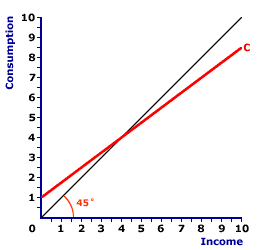
|
|
ADB: An abbreviation that stands for either the African Development Bank the Asian Development Bank. The African Development Bank is a regional multilateral development institution engaged in promoting the economic development and social progress of its member countries in Africa. The Bank, established in 1964, started functioning in 1966 with its Headquarters in Abidjan, Cote d' lvoire. The Bank borrows funds from the international money and capital markets. Its shareholders are the 53 countries in Africa as well as 24 countries in the Americas, Europe, and Asia. The Asian Development Bank is a multilateral development finance institution dedicated to reducing poverty in Asia and the Pacific that engages in mostly public sector lending for development purposes in its developing member countries. They pursue this goal by helping to improve the quality of people's lives providing loans and technical assistance for a broad range of development activities. ADB raises fund through bond issues on the world's capital markets but they also rely on members' contributions. The ADB was established in 1966 and has its headquarters in Manila, Philippines. As of September of 2003, the ADB had 58 member countries.
Visit the GLOSS*arama
|
|


|

|
                           INTERCEPT, CONSUMPTION LINE: The intercept of the consumption line indicates autonomous consumption, consumption that does not depend on the level of income or production. This can be thought of as the baseline level of consumption that would be undertaken if income falls to zero. Autonomous consumption is affected by the consumption expenditures determinants, which cause a change in the intercept and a shift of the consumption line. The value of the intercept of the saving line is the negative of the value of the intercept of the saving line. | Consumption Line | 
|
The consumption line, also termed propensity-to-consume line or consumption function, shows the relation between consumption expenditures and income for the household sector. The income measure commonly used is national income or disposable income. Occasionally a measure of aggregate production, such as gross domestic product, is used instead.A representative consumption line is presented in the exhibit to the right. This red line, labeled C in the exhibit, is positively sloped, indicating that greater levels of income generate greater consumption expenditures by the household sector. This positive relation corresponds to the fundamental psychological law of Keynesian economics. The consumption line graphically illustrates the consumption-income relation for the household sector, which is the foundation of the aggregate expenditures line used in Keynesian economics to identify equilibrium income and production. For reference, a black 45-degree line is also presented in this exhibit. Because this line has a slope of one, it indicates the relative slope of the consumption line. The intercept of the consumption line indicates the intersection point between the consumption line and the vertical consumption axis. The consumption line intersects the vertical axis at a value of $1 trillion. Theoretically, this is a minimum "baseline" level of consumption, the amount of consumption undertaken even if income falls to zero. More to the point, this intersection indicates autonomous consumption--consumption expenditures unrelated to income. Click the [Intercept] button to illustrate. Autonomous consumption is consumption expenditures by the household sector that are unrelated to and unaffected by the level of income or production. This is best indicated by a zero level of income. While individuals occasionally come face-to-face with autonomous consumption, as their incomes drop to zero due to unemployment, for the aggregate economy autonomous consumption is mostly an unlikely theoretical extrapolation. However, from an analytical perspective, the intercept of the consumption line is affected by the consumption expenditures determinants. These are ceteris paribus factors other than income that affect consumption, but which are held constant when the consumption line is constructed. Any change in these determinants cause the consumption line to shift, which necessarily means a new intercept and a new level of autonomous consumption.

Recommended Citation:INTERCEPT, CONSUMPTION LINE, AmosWEB Encyclonomic WEB*pedia, http://www.AmosWEB.com, AmosWEB LLC, 2000-2025. [Accessed: July 18, 2025].
Check Out These Related Terms... | | | | | | | | | | | | | | |
Or For A Little Background... | | | | | | | | | |
And For Further Study... | | | | | | | | | | | | | | |
Search Again?
Back to the WEB*pedia
|



|

|
ORANGE REBELOON
[What's This?]
Today, you are likely to spend a great deal of time wandering around the downtown area trying to buy either shoe laces for your snow boots or a rim for your spare tire. Be on the lookout for the happiest person in the room.
Your Complete Scope
This isn't me! What am I?
|

|
|
Mark Twain said "I wonder how much it would take to buy soap buble if there was only one in the world."
|

|
|
"A winner is someone who recognizes his God-given talents, works his tail off to develop them into skills, and uses those skills to accomplish his goals. " -- Larry Bird, basketball player
|

|
G-10
Group of Ten
|

|
|
Tell us what you think about AmosWEB. Like what you see? Have suggestions for improvements? Let us know. Click the User Feedback link.
User Feedback
|


|


